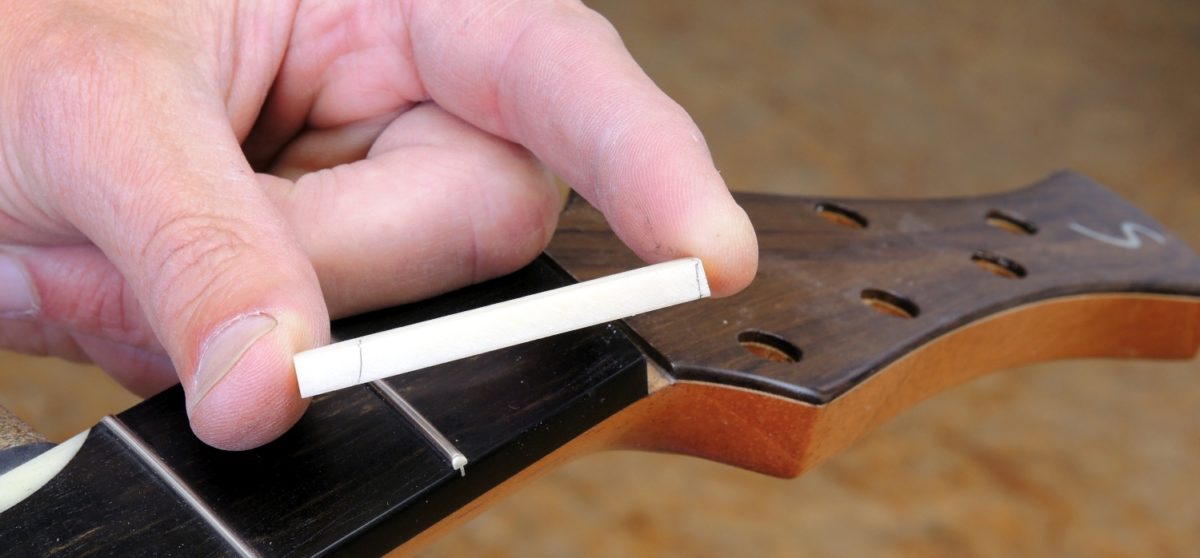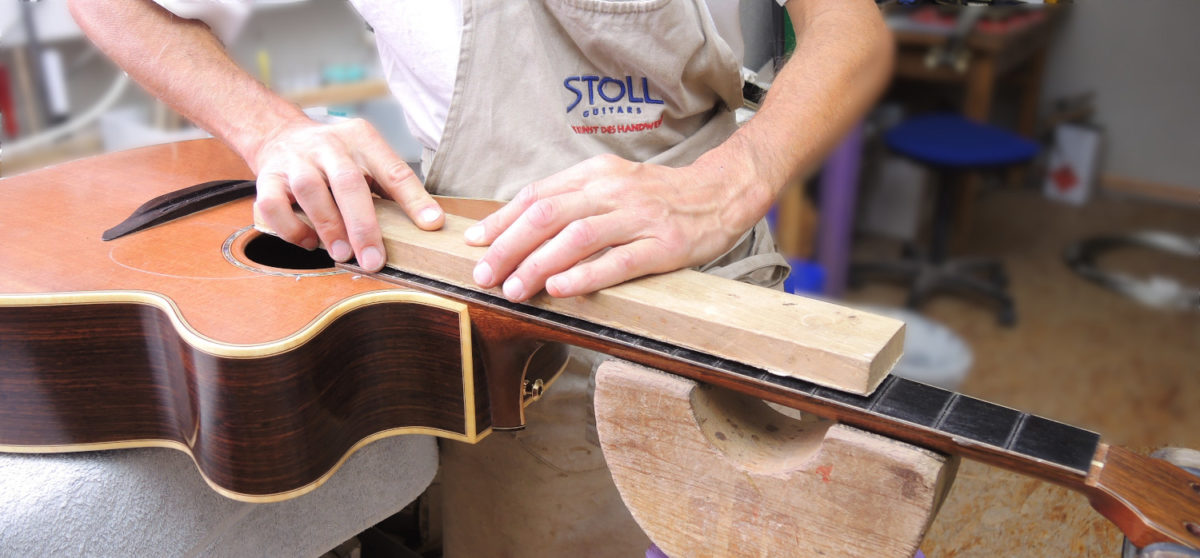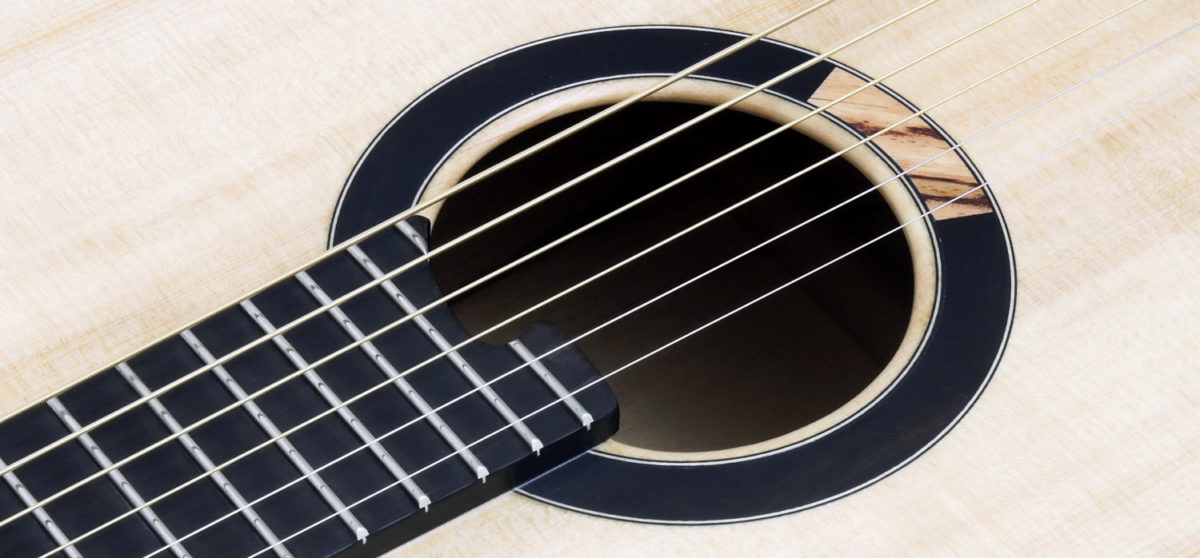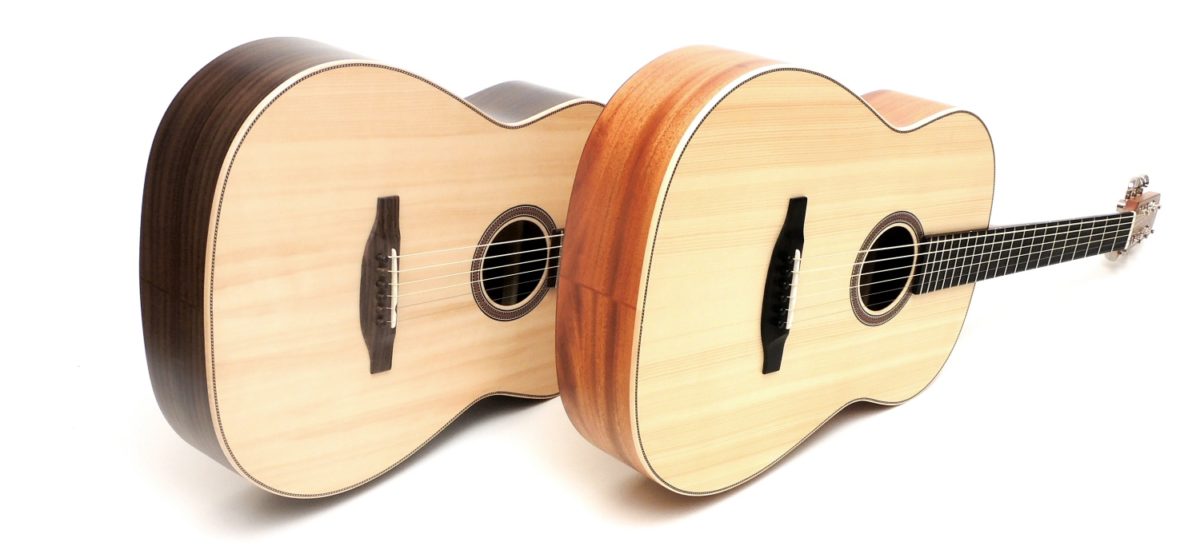Some guitarists have experienced this. The string action is catastrophic, in some places much too high, in others so low that buzzing is inevitable. All the advice you've received in forums and specialist journals has been of no avail. Turning the truss rod either one way or the other, sanding down the bridge inlay only ...continue reading "Neck Reset"
Photo Story: Replacing the Nut on an Acoustic Guitar
There are many reasons to change the nut. A change from industrial plastic casting to handmade bone saddle is desired, the old nut is filed too deep, the distances between the strings are not correct and there is no more room for correction. First, the strings are removed and the old nut is taken off. ...continue reading "Photo Story: Replacing the Nut on an Acoustic Guitar"
Photo Story: Refretting of an Acoustic Guitar
The string action is adjusted perfectly with the help of the truss rod, saddle and bridge inlay and the frets are still buzzing? A common phenomenon is a tiny hump at the neck-body transition. This is due to the fact that in the course of time all the woods have settled a little, only where ...continue reading "Photo Story: Refretting of an Acoustic Guitar"
DIY – How to Adjust the String Action on an Acoustic Guitar
The string action is the distance between the strings and the frets. The string action has a significant influence on both the playability of the guitar and its sound. A low string action requires less force when pressing down the strings and therefore easily allows for faster playing. A high string action offers more dynamics ...continue reading "DIY – How to Adjust the String Action on an Acoustic Guitar"
The Sound Hole and its Influence on the Sound
The soundhole is where the sound emerges. In a nutshell, this statement sums it up, but as always in lutherie, the soundhole is one of the many components that influence sound development. Therefore, the size, position, and a few other features of the soundhole should be considered carefully.
Acoustic Basses – Mastering Constructional Challenges
Bass gives music direction and soul. Therefore, bass instruments have always been important in the interplay of instruments. The first thing that comes to mind is, of course, the double bass of the classical orchestra. But there are also basses in other ensembles. Acoustic Basses Overview For example, many mandolin orchestras traditionally have an upright ...continue reading "Acoustic Basses – Mastering Constructional Challenges"
Baritone Acoustic Guitars
Crossover guitars are characterised by a feature combination of classical and steel string guitar. They adapt the playability of a certain guitar to the personal playing habits that a player has acquired on a guitar of a different genre. The most common case is that a steel string guitarist has difficulty playing the classical guitar.
Crossover Guitars
Crossover guitars are characterised by a feature combination of classical and steel string guitar. They adapt the playability of a certain guitar to the personal playing habits that a player has acquired on a guitar of a different genre. The most common case is that a steel string guitarist has difficulty playing the classical guitar.
12 Fret Acoustic Guitars
12-fret guitars are characterised by neck-body-transition at 12th fret. Basically, this is the case with all classical guitars. However, this article is about the steel string guitar which developed from the classical guitar. To understand today's 12-fret guitar, we not only have to take a look at the development of the guitar, but also deal ...continue reading "12 Fret Acoustic Guitars"
Fanned Frets or Multiscale Fretboard
The idea behind the principle of fanned frets is to provide each string the optimal length. This results in an open sound with a very clean intonation and also in a more relaxed plaing. The hand no longer has to be moved parallel to the frets, but can make a natural semicircular movement.









